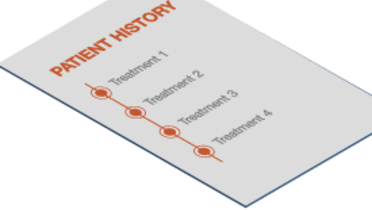-
0
Patient Assessment
- 0.1 Patient demand
- 0.2 Overarching considerations
- 0.3 Local history
- 0.4 Anatomical location
- 0.5 General patient history
-
0.6
Risk assessment & special high risk categories
- 5.1 Risk assessment & special high risk categories
- 5.2 age
- 5.3 Compliance
- 5.4 Smoking
- 5.5 Drug abuse
- 5.6 Recreational drugs and alcohol abuse
- 5.7 Parafunctions
- 5.8 Diabetes
- 5.9 Osteoporosis
- 5.10 Coagulation disorders and anticoagulant therapy
- 5.11 Steroids
- 5.12 Bisphosphonates
- 5.13 BRONJ / ARONJ
- 5.14 Radiotherapy
- 5.15 Risk factors
-
1
Diagnostics
-
1.1
Clinical Assessment
- 0.1 Lip line
- 0.2 Mouth opening
- 0.3 Vertical dimension
- 0.4 Maxillo-mandibular relationship
- 0.5 TMD
- 0.6 Existing prosthesis
- 0.7 Muco-gingival junction
- 0.8 Hyposalivation and Xerostomia
- 1.2 Clinical findings
-
1.3
Clinical diagnostic assessments
- 2.1 Microbiology
- 2.2 Salivary output
-
1.4
Diagnostic imaging
- 3.1 Imaging overview
- 3.2 Intraoral radiographs
- 3.3 Panoramic
- 3.4 CBCT
- 3.5 CT
- 1.5 Diagnostic prosthodontic guides
-
1.1
Clinical Assessment
-
2
Treatment Options
- 2.1 Mucosally-supported
-
2.2
Implant-retained/supported, general
- 1.1 Prosthodontic options overview
- 1.2 Number of implants maxilla and mandible
- 1.3 Time to function
- 1.4 Submerged or non-submerged
- 1.5 Soft tissue management
- 1.6 Hard tissue management, mandible
- 1.7 Hard tissue management, maxilla
- 1.8 Need for grafting
- 1.9 Healed vs fresh extraction socket
- 1.10 Digital treatment planning protocols
- 2.3 Implant prosthetics - removable
-
2.4
Implant prosthetics - fixed
- 2.5 Comprehensive treatment concepts
-
3
Treatment Procedures
-
3.1
Surgical
-
3.2
Removable prosthetics
-
3.3
Fixed prosthetics
-
3.1
Surgical
- 4 Aftercare
Coagulation disorders and anticoagulants therapy
Key points
- Clotting disorders as well as thrombotic disorders or anticoagulants are not a contraindication for implant treatment
- Common routine is to maintain preventive anticoagulation therapy during implant surgery
- Consider medication interferences of Coumarin type anticoagulants with some other medication at times used in implant therapy (some antibiotics and analgesics)
Coagulation disorders
Patients may have compromised blood coagulation due to inherited hemophilia or acquired disorders of coagulation resulting from preventive anticoagulant therapy in case of cardiovascular diseases. There are also states of heightened coagulation, called hypercoagulability, which lead to the intake of anticoagulants to avoid thrombosis and embolism. There are inherited coagulable states. See chapter on General patient history.
Preventive anticoagulant therapy in thrombotic disorders
As the number of patients living longer grows, there is an increasing incidence of cardiovascular diseases/risks requiring anticoagulant medication.
Anticoagulants, per se, do not represent a contraindication for implant surgery. However, a patient's clotting/bleeding status must be carefully evaluated before proceeding with surgery. Consultation with the patient's internist may be necessary as modulation of anticoagulant therapy can only be considered after the bleeding during and after surgical treatment.
Prior to surgery, clinicians may wish to communicate with the patient's internist and request coagulation tests to ensure that International Normalized Ratio (INR) is <4. International Normalized Ratio is usually 1 to 1.3 and reaches 2–3 for an effective anticoagulation therapy. Alternative tests are Prothrombin time (PT: normally 11 – 13 seconds) which measures the extrinsic coagulation pathway, and Partial Thromboplastin time (PTT: normally 25 - 35 seconds, under heparin 60-70 seconds), which measures both the "intrinsic" and the common coagulation pathways.
A common routine today is to maintain preventive anticoagulant therapy, as the risk of intense bleeding during treatment can be considered low, in comparison to the risk for a thromboembolic event in case of reducing or ceasing the anticoagulant medication.
Clinicians should consider local hemostasis measures such as wound compression through a dressing, tight wound closure with fibrin sealant, and post-operative mouth rinse with tranexamic acid. If local haemostatic measures are taken, case-controlled prospective studies indicate no higher incidence of hematomas, allowing for the surgical procedures to be performed on an outpatient basis.
At future recall visits, if trauma to tissue occurs, clinicians can consider wound compression, local application of thrombin, or post-treatment mouth rinse with tranexamic acid, to attain hemostasis.
Seek internist / hematologist advice, if further information is needed.

The most common anticoagulant medications
- Vitamin K antagonists (Coumarins, Marcumar®)
- Heparin and derivative substances
- Thienopyridines (Clopidogrel, Plavix®)
- Acetylsalicylic acid (ASA, Aspirin®), although not an anticoagulant per se is also used due to its antiplatelet effect at low dosages
- NOAC (new oral anticoagulants), factor II a, and factor Xa inhibitors

Heparin has a shorter metabolic half-life than Coumarin and acetylsalicylic acid. In case of peri-operative bleeding this allows for a faster and more flexible antagonization. Although heparin is administered deep subcutaneously by the patient him/herself or intravenously it does allow for outpatient treatment.
Coumarin interacts with other drugs, especially some antibiotics and non-steroidal antinflammatory drugs. Penicillin/amoxicillin, ciprofloxacin, cephalosporin type and most antibiotics decrease the intestinal flora, thus inhibiting vitamin K synthesis, and potentiate the coumarin effect. Anti-inflammatory drugs, like ibuprofen can also increase Coumarin's effect and increase the risk of bleeding.
Ibuprofen can also interfere with the antiplatelet effect of low-dose acetylsalicylic acid (for example Aspirin® 81 mg per day), potentially rendering acetylsalicylic acid less effective when used for cardioprotection and coagulation prevention. In such instances, a clinician should consider paracetamol-type analgesics as an alternative.
NOAC are an alternative to vitamin K antagonists, and can have interactions with Amiodarone type antiarrhythmic agents.
Inherited clotting disorders (Hemophilia A/B/C)
Hemophilia is a deficiency of factor VIII (A), factor IX (B), both X-linked, or of facor XI (C) autosomal.This patient group does not represent a contraindication for surgical implant treatment. Preoperative replacement therapy of the missing coagulation factor should be performed. A medical specialist, familiar with hemophilia, should be included in the treatment team and here, again, an INR reading, no more than 72 hours prior to surgery, within an acceptable range is desirable.



